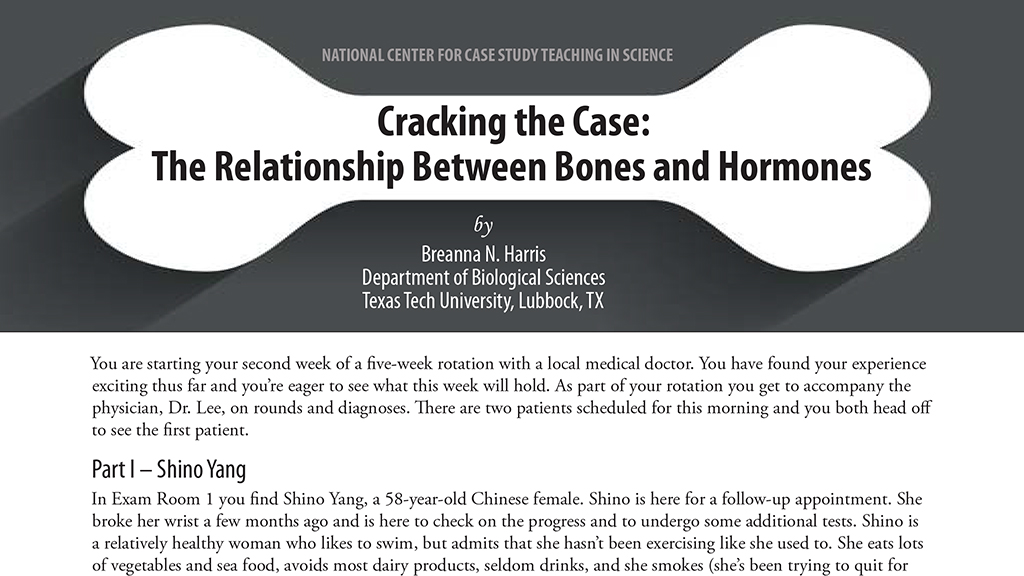Abstract
In this directed case study, students shadow Dr. Lee in diagnosing two patients with osteoporosis. The students are given patient history and an initial panel of test results, which they discuss in small groups. After diagnosis, they are asked specific questions about bone remodeling, bone physiology, and the drugs prescribed by Dr. Lee. The ultimate goal is to understand how osteoporosis developed in Shino Yang (post-menopausal osteoporosis) and Eleanor Davis (glucocorticoid-induced osteoporosis), and to understand the mechanism of action of the prescribed treatments. The case study data are fabricated, but the values provided are within physiological ranges and should thus be a good representation of what students would see in patients with these actual diagnoses. This case study was developed for college-level, pre-nursing students in a non-majors anatomy and physiology course, but would also be suitable for majors physiology, animal physiology, pharmacology, pre-medical or exercise physiology students, or likely any biology students with a basic knowledge of bone remodeling.



